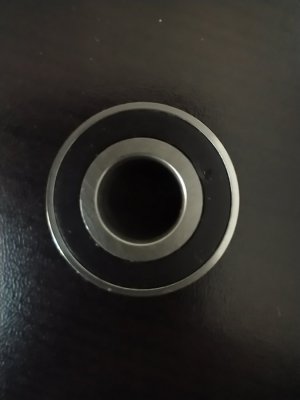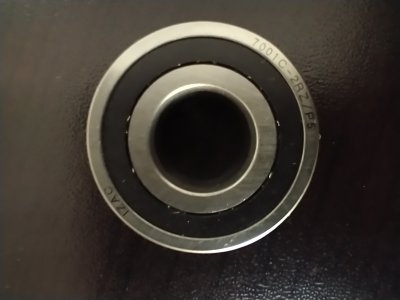New mechanical lesson for the computer guy, ANGULAR CONTACT BALL BEARINGS.
YINSH was very responsive to my email about torquing their YSR-M12×1.75P ball bearing locknut. 31 in-lbs (3.5 N-m) is actually the setscrew torque. As far as the locknut torque goes, various torques result in different axial force applied to the bearing. 67 in-lbs (7.6 N-m) results in
2860.6 N of axial force. 89 in-lbs (10.1 N-m) in 3814.1 N, and 114 in-lbs (12.9 N-m) in 4882.0 N.
After reading their response, and thinking about how only 31 in-lbs of force had made the Z axis ballscrew shaft difficult to turn, I searched for some information on the bearing, 7001C-2RZ/P5. As soon as I saw a cut-away view of an angular contact bearing I understood the problem. These bearings have a right and wrong installation direction! Upon closer inspection one can see that the two sides of the bearing are not the same.


Based on the cutaway drawing, I believe the side with the thicker outer race should face each other. I haven't pulled apart the assembly, but I'm sure I have at lease one facing the wrong way. Since I only torqued the locknut to 31 in-lbs, and didn't spin the bearing I'm confident I did not damage them. However I did crank down on the locknut setscrews, so the torque information for that particular locknut is out the window since it's now no doubt deformed out-of-round.
Which leads to the final question, how much axial force should be applied to the bearings by the locknut. A quick search on this bearing number didn't find any recommendation, but I'll continue to search and post if I find anything.




